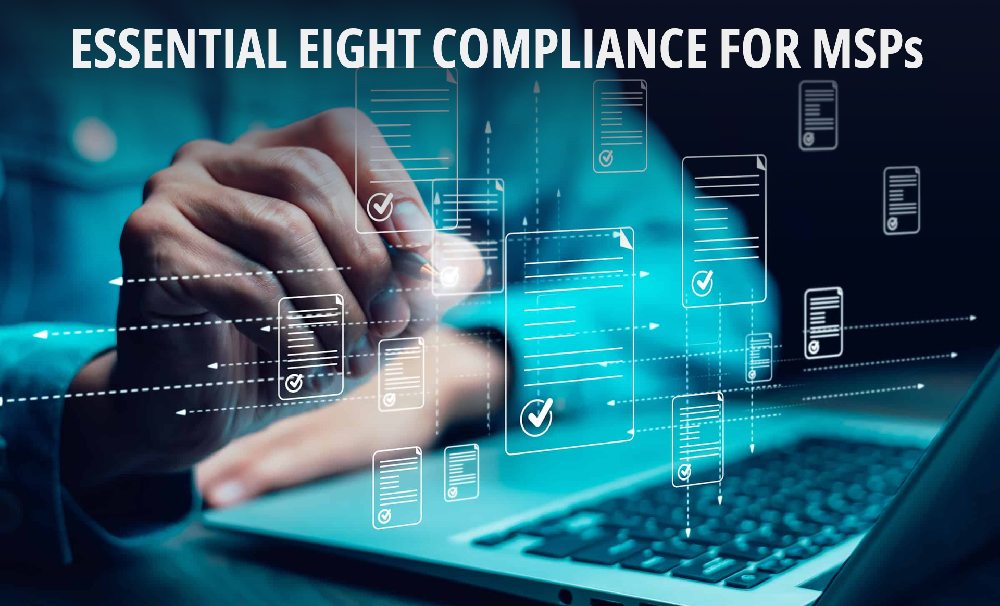Guide to-Essential Eight Compliance for MSPs
#NoDramas Guide to:
Essential Eight Compliance for MSPs
A step-by-step breakdown for Managed Service Providers on understanding, implementing, and demonstrating adherence to the Australian Cyber Security Centre’s (ACSC) Essential Eight mitigation strategies—for both their own operations and their clients.
Why It Matters
In today’s escalating cyber-threat landscape, MSPs aren’t just managing IT—they’re safeguarding businesses. The ACSC’s Essential Eight is the de-facto baseline for cyber resilience across Australian government and, increasingly, private-sector organisations.
This guide helps you:
- Understand each mitigation strategy and its maturity levels.
- Implement the Essential Eight inside your MSP (lead by example).
- Package and deliver Essential Eight services to clients.
- Prove compliance and drive continuous improvement—#NoDramas.
The Essential Eight: What & Why
- Application Whitelisting – Prevents unauthorised software from running.
- Patching Applications – Fixes known software vulnerabilities.
- Patching Operating Systems – Fixes OS vulnerabilities.
- Multi-Factor Authentication (MFA) – Adds an extra layer of login security.
- Restricting Administrative Privileges – Reduces the power of high-privilege accounts.
- Daily Backups – Ensures you can recover quickly after an incident.
- Configuring Office Macro Settings – Stops malicious macros.
- User Application Hardening – Disables risky browser & app features.
Maturity Levels (0 – 3): ACSC defines graded targets so organisations can improve progressively.
Step 1 — Implement Internally (Lead by Example)
Aim for Maturity Level 1 across all eight controls, then raise the bar.
Application Whitelisting
Deploy solutions such as Microsoft AppLocker or third-party tools.
Patch OS & Apps
Automate, test, and rapidly deploy patches across endpoints, servers, and network devices.
Multi-Factor Authentication
Mandate MFA for all remote, privileged, and cloud logins (e.g., M365, VPN).
Restrict Admin Privileges
Adopt least privilege. Use PAM & enforce MFA on admin accounts.
Daily Backups
Automate, store offsite/immutable, and test restores regularly.
Office Macro Settings
Block macros from the internet; warn on untrusted sources; train staff.
User Application Hardening
Disable Flash, Java applets, etc. Deploy EDR to endpoints.
Step 2 — Guide & Service Your Clients
- Initial Assessment: Offer a “Cyber Resilience Assessment” to baseline maturity.
- Education: Translate threats into business outcomes (“MFA stops 99% of automated attacks”).
- Phased Roadmap: Start with the Top 4 controls for the biggest security lift.
- Managed Service Packaging: Bundle patching, MFA, backup, and PAM as subscription services.
Overcoming Resistance
Cost
Position as risk-reduction ROI relative to breach costs.
Complexity
Your “no-dramas” expertise removes technical burden.
Disruption
Schedule off-peak; test thoroughly to limit downtime.
Step 3 — Demonstrate & Continuously Improve
- Documentation & Reporting: Maintain configs and issue monthly Essential Eight status reports.
- Regular Audits & Tests: Schedule internal/external audits, pentests, and vulnerability scans.
- Continuous Monitoring: Alert on compliance drift and security incidents.
- Incident Response Plans: Align recovery actions with Essential Eight priorities.
- Market the Advantage: Showcase compliance as a core differentiator (#NoDramas Security).

